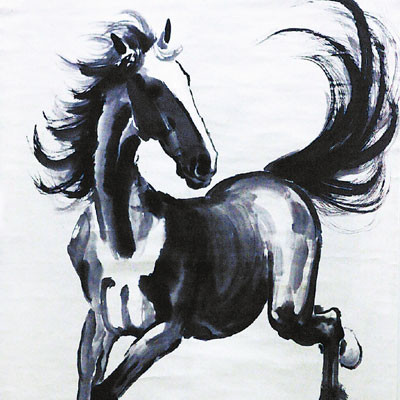
Helen Deng
deng.hneng@gmail.com
IN May 2011, a painting by Chinese artist Qi Baishi (1864-1957) fetched 456 million yuan (US$65 million) at an auction in Beijing.
The painting by the self-taught artist, which depicts an eagle on a pine tree, surrounded by two calligraphy scrolls, is the most expensive modern Chinese painting.
Now Shenzheners can see a similar painting by Qi Baishi at Shenzhen Museum, together with 99 other paintings by top Chinese artists of the 20th century.
The museum is holding an exhibition “Essence of Chinese Paintings” to show the selected works of 12 famous Chinese artists: Qi Baishi, Huang Binhong (1865-1955), Yu Fei’an (1889-1959), Xu Beihong (1895-1953), Fu Ru (1896-1963), Pan Tianshou (1897-1971), Zhang Daqian (1899-1983), Fu Baoshi (1904-1965), Lu Yanshao (1909-1993), Xie Zhiliu (1910-1977), Shi Lu (1919-1982) and Huang Zhou (1925-1997).
The precious paintings, many of which are seldom exhibited, have traveled thousands of miles from northeastern China to Shenzhen. They were previously kept at three museums in Northeast China’s Liaoning Province: Liaoning Provincial Museum, Shenyang Summer Palace Museum and Lushun Museum.
“Eagle on Pine and Cypress,” a three-meter-long scroll by Qi, is one of the paintings on display. It’s very similar to the one sold for 456 million yuan last year. Both are long scrolls painted in the 80s of Qi. “Eagle” is a homonym of “hero” in the Chinese language and both paintings have been presented to State leaders as gifts.
There are also several paintings of shrimps by Qi, who is best known for his vivid depiction of shrimps.
Fans of Xu, a master who combined Chinese brush and ink techniques with Western perspective and methods of composition, can enjoy his vivid horse paintings. His paintings of lion are equally good, as can be seen from “Lion Snatching a Snake.” One can feel the tension of the painting, with the lion and the snake staring at each other.
Fu Ru, a descendent of the Qing Dynasty (1644-1911) imperial family who almost became the last emperor of Qing, excelled in painting, poetry and calligraphy. Visitors can enjoy all three in his painting “Boat and Tree,” which depicts a boat sailing against the current under a cliff. The stillness of the old tree and the movement of the boat form an interesting contrast. A poem is written on the painting, according to the tradition of Chinese paintings, to express the artist’s emotion, and the calligraphy is highly advanced.
The 20th century saw the biggest social changes in China in a millennium: the downfall of the Qing Dynasty, the invasion of China by foreign militaries and foreign culture, and the endeavor to build a modern China.
As the Chinese saying goes: “A chaotic society gives birth to heroes.” The 20th century has more than its share of great artists. Artists of the time are best known for inheriting traditions and absorbing Western skills.
|

